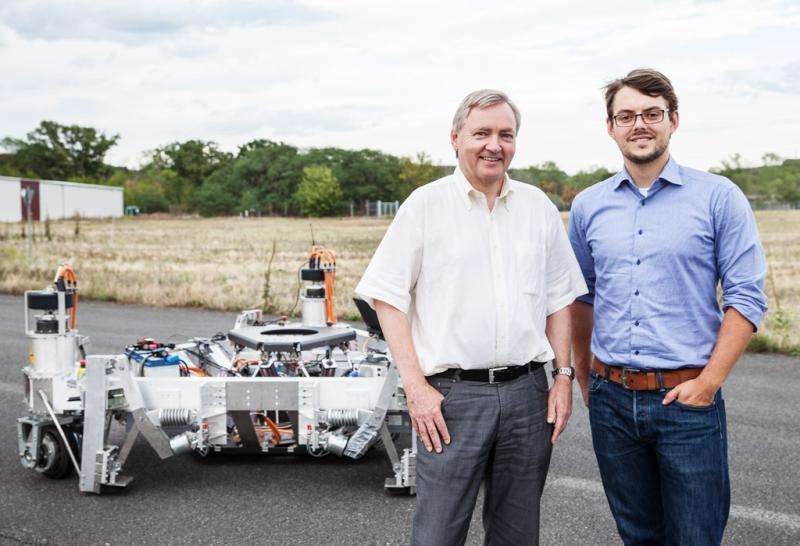Scientists discuss opportunities of autonomous driving

Professor Hermann Winner and Walther Wachenfeld from the Automotive Engineering research group illustrate the opportunities, risks and challenges of autonomous driving.
TU Darmstadt: Professor Winner, Mr. Wachenfeld, when will the first autonomous cars drive in regular traffic?
Hermann Winner: There will be no vehicle which is autonomously on the road everywhere at all times even in the next thirty years. These vehicles currently move back and forth on a trial basis in a specific network and are constantly monitored.
So, the vision of a vehicle which reacts intelligently in any situation will not occur so quickly; highly automated driving on certain routes, however, yes.
What does this mean?
Walther Wachenfeld: That the driver will have to take over the steering wheel if necessary, but may also deal with other things, for example process emails without paying attention to traffic – whilst the system prompts acceptance. So, at this configuration level, the driver will not yet be completely released and able to fold down the steering column and sleep.
What would be a typical situation in which the onboard computer prompts the driver to take over?
Wachenfeld: With today's assistance systems, the driver is prompted if, for example, breaking needs to take place above a specified level or steering needs to take place beyond a specific power. And the lower accident rates using these assistance systems show that people can actually control this well technically.
In the case of highly automated vehicles, however, one no longer counts on intervention by people in this form. A highly automated car must, for example, be capable of making an emergency stop and then always apply this when necessary. High automation does not have the option of doing nothing. This is one of the technical challenges that we now face.
Will autonomous driving further reduce accidents?
Winner: An argument in favour of the need for implementation is very clear that the risk of accidents drops due to autonomous driving. After all, people cause the majority of accidents. So, safety is a major topic in the inter-relationship. One must, however, also see that any new system which has an influence on traffic produces new problems. It is, however, important that the end result is positive.
Do robots drive more safely than people then?
Winner: It is extremely difficult to prove that.
Can a machine react to situations as a person does or are there limits which cannot be resolved technically either?
Winner: We do not know these limits yet, to be honest. But we do know that machines will drive differently from people. Caution will be the main criterion, especially in the infancy of autonomous driving: Distances and speeds, for example, must be precisely met.
Driving will be very defensive – untypical of people. And there will be obvious weaknesses: Machines will certainly not master anticipation in traffic so well, just as little dealing with exceptional situations. And nobody knows exactly whether the one will compensate for the other at the moment.
Provided by Technische Universitat Darmstadt



















